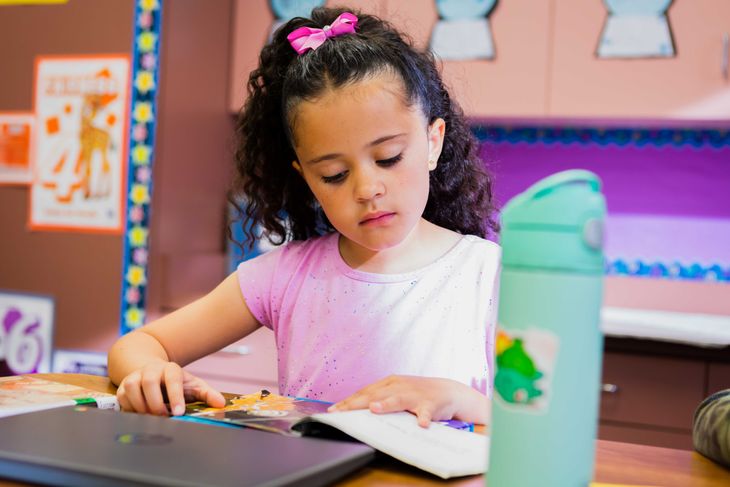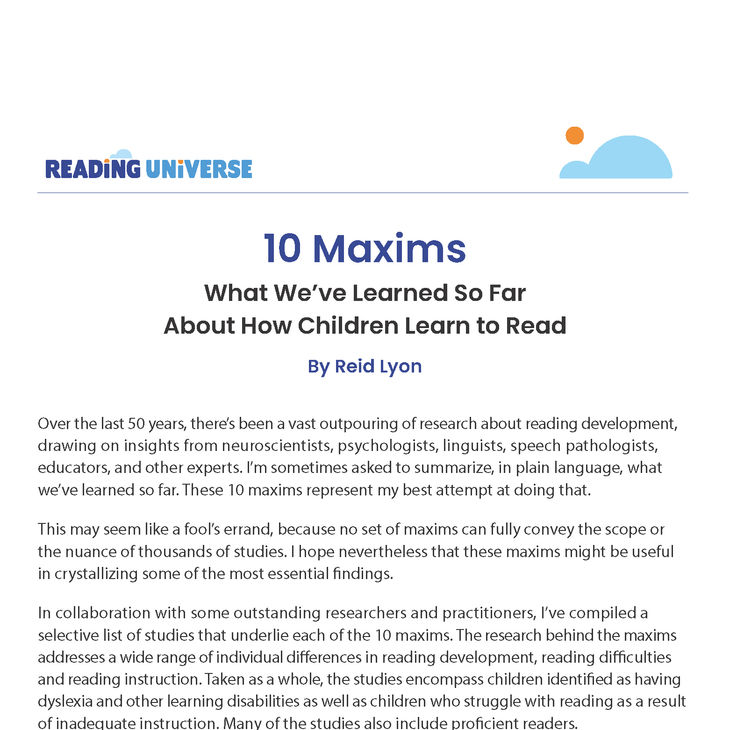
sšsšsš
What Is Literacy Knowledge?
Literacy knowledge includes understanding print concepts and how printed language conveys meaning, and it refers to an awareness of the elements of different genres of writing.
A child's literacy knowledge begins to grow the minute an adult puts a book in their hand and shows them how to turn the pages. They learn how this mechanical object works … and they learn that this thing contains a story! Over time, with adult guidance, they figure out that the story actually lives in the printed letters on the page.
This awareness and understanding that printed words carry meaning — that reading is a way to get information — opens the door to everything reading has to offer a child. They'll need to learn a lot more to crack the code and read themselves, but they are on the way!
Children gain a wealth of literacy knowledge from the adults around them, who point out words on street signs, shows them that we read left to right, or that we put spaces between words when we write. Children learn most basic concepts of print during kindergarten. As texts become more sophisticated, other print features come into play — such as captions and glossaries.
In addition to concepts of print, literacy knowledge covers genre, or categories of written language. For example, fiction and nonfiction are two broad genres. And these two categories include further classifications, such as poetry and plays (for fiction) and essays and technical writing (for nonfiction).
Teaching about genre provides students with a framework for understanding the common characteristics, themes, and structures of written material. Knowing how to navigate different types of texts from different genres supports your students' comprehension.
Fiction takes many forms in the early grades, including nursery rhymes, fairy tales, folk tales, fables, adventure stories, fantasies, and realistic fiction. Nonfiction deserves equal attention, as these texts offer important sources for building background knowledge, which is critical for comprehension.
The Common Core Standards suggest roughly equal exposure to fiction and nonfiction in the early grades and provide some guidance about which features of genre students should learn. As students progress to middle and high school, the emphasis shifts to informational texts across the different content areas of science, history, and social studies.
Related Content


